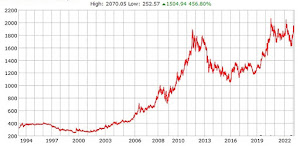3 minute on how to find and extract gold plated pin connectors from old...
3-minute explanation on how to find and extract gold-plated pin connectors from old or obsolete electronics:
🕵️♂️ Step 1: Know What to Look For
Gold is used in electronics for its excellent conductivity and resistance to corrosion. You’ll typically find gold-plated connectors, pins, and fingers in:
Old desktop computers (especially servers)
Laptops and motherboards
Hard drives
RAM sticks
PCI cards
CPUs
Old mobile phones
Modems, routers, and network equipment
Look for parts that connect or plug into something else—gold is often used on those contact points.
🧰 Step 2: Tools You’ll Need
Small Phillips screwdriver or electronics toolkit
Needle-nose pliers
Wire cutters
Magnifying glass (helpful for spotting gold)
A container to store gold pins safely
Optional: Dremel tool or rotary cutter for tough components.
🪛 Step 3: Dismantle the Device
Start by opening the casing of the device. Be careful—old electronics may have sharp edges or hidden screws.
Once open:
Remove the motherboard or circuit boards
Identify gold-plated connectors: they’re typically shiny yellow (not dull brass color)
PCI cards, CPU sockets, and RAM slots usually have gold-plated pin connectors
🏅 Step 4: Identify Gold-plated Parts
You're looking for:
Edge connectors (long strips on RAM or expansion cards)
CPU pins (older CPUs, especially ceramic ones like Pentium Pro or AMD K6, can have gold)
Pin headers (those upright little needles that wires plug into)
Internal connectors (IDE connectors, backplane connectors)
Use a magnifying glass if unsure—gold plating has a distinctive bright yellow shine and doesn’t tarnish.
✂️ Step 5: Extract the Gold Pins
Once found, use:
Wire cutters to snip gold pins off headers
Pliers to pull gold-plated connectors or edge fingers from boards
For RAM or PCI cards, cut the golden edge fingers off cleanly
Place all your gold-bearing parts in a labeled container. Be neat—it helps later if you go on to refine the gold chemically.
⚠️ BONUS: What Not to Do
Don’t expect pure gold—it’s plated, and usually microns thick
Don’t refine unless you know what you’re doing—it involves hazardous chemicals like nitric acid and should only be done with proper knowledge and safety
✅ In Summary:
Look for gold on connectors and contact points
Focus on RAM, CPUs, cards, and motherboards
Use simple tools to remove and collect
Store your finds until you have enough to refine or sell as scrap












0 ความคิดเห็น: